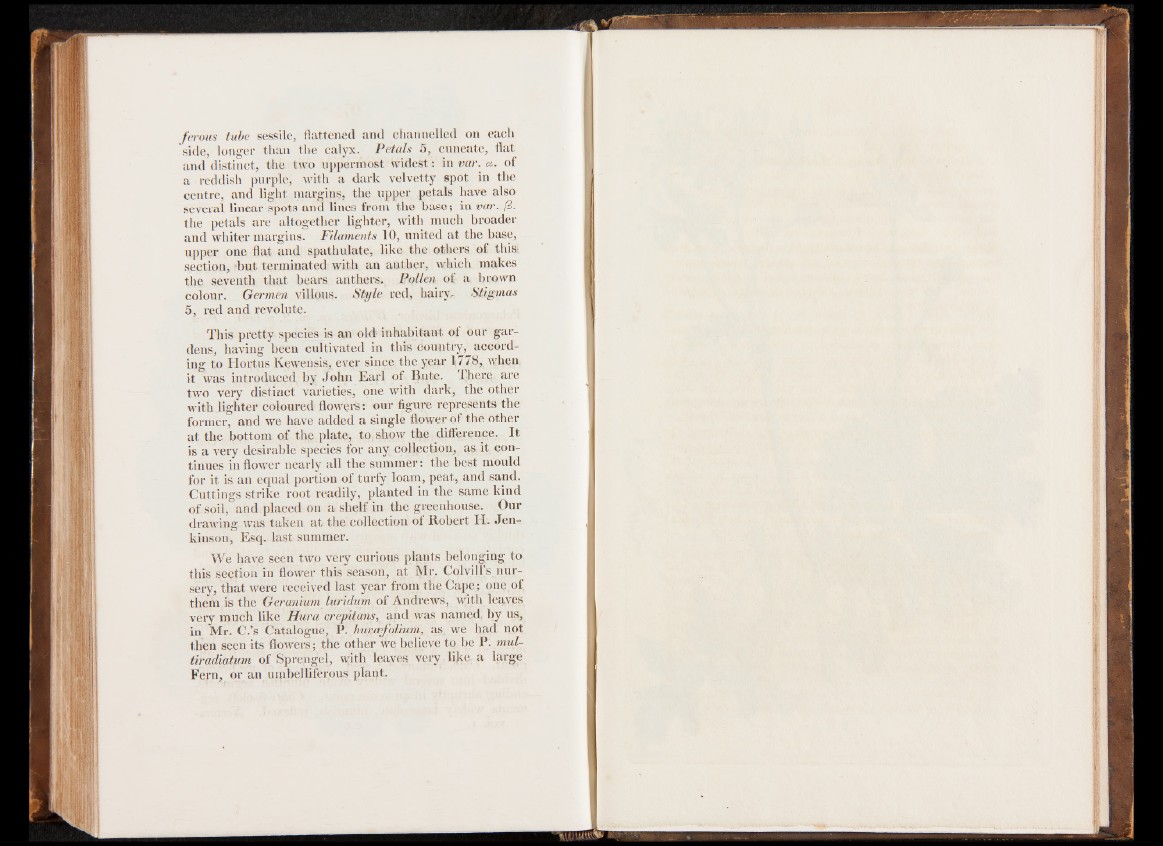
ferous tube sessile, flattened and channelled on each
side, longer than the calyx. Petals 5, cuneate, flat
and distinct, the two uppermost a reddish purple, with a dark vwelivdeetst.ty: isnp ovta r.i na . thoef
centre, and light margins, the upper petals have also
several linear spots and lines from the base; in var. /3.
the petals are altogether lighter, with much broader
and whiter margins. Filaments 10, united at the base,
upper one flat and spathulate, like the others of this;
section, but terminated with an anther, which makes
tchoelo user.v enGthe rtmheant vbiellaorus s.a ntShteyrlse. rePdq, llheani ryo.f a Stbirgomwans
5, red and revolute.
This pretty species is an old1 inhabitant ot our gardens,
having been cultivated in this country, accordiint
gw taos Hinotrrtoudsu Kceedw ebnys iJs,o ehvne rE sainrlc eo tfh eB yuetea.r 1T77h8e,r ew haerne
twwioth vliegrhyt edr isctoilnocutr evda rfileotwieesr, s:o noeu rw fiitghu rdea rrekp, retsheen tost htheer former, and we have added a single flower of the other
at the bottom of the plate, to. show the difference. It
is a very desirable species for any collection, as it continues
in flower nearly all the summer: the best mould
fCour titti nigs sa nst reiqkuea lr opootr trieoand iolfy ,t uprflyan ltoeadm i,n p tehaet , saanmde skainndd.
odfr aswoiiln, ga nwda sp tlaakceedn oant tah esh ceolfll einc titohne ogfr eReonhboeruts eH. . JOenu-r
kinson, Esq. last summer.
We have seen two very curious plants belonging to
this section in flower this season, at Mr. Colvill’s nurtshereym,
tihs atth we eGree rraencieuivme dlu lraisdtu yme aorf fAronmdr ethwes ,C awpiet h; olenaev, eofs,
very much like Hura crepitans, and was named, by us,
in Mr. C.’s Catalogue, P. hurcefqlium, as, we had not
then seen its flowers; the other we believe to be P. mul-
tiradiatum of Sprengel, with leaves very lij<e a large
Fern, or an umbelliferous plant.